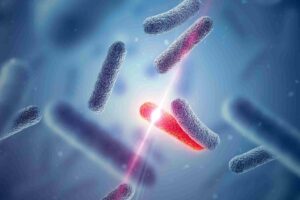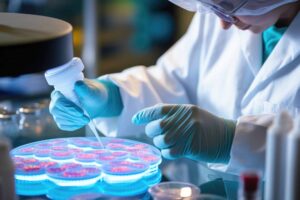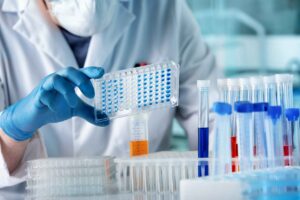What is already known
Gut microbes are crucial for the health and development of infants, and imbalances in the human microbiota have been linked to numerous disorders — from gastrointestinal diseases to neurodevelopmental conditions. However, our understanding of microbiota development during early life remains limited.
What this research adds
Researchers developed a machine-learning model, which they called Q-net, that tests and learns how gut bacteria interact over time. Q-net then creates a digital representation of the human gut microbiota, allowing scientists to simulate perturbations and experiments that may not be feasible in the laboratory. The researchers validated the model’s predictions regarding the microbiota’s early development by analyzing data from 30 infants. The model could predict which infants were at risk for cognitive deficits with an accuracy of 76%. The model also suggested that interventions aimed, for example, at increasing the abundance of a specific bacterial species could lower the developmental risk for about half of the infants.
Conclusions
The findings show that Q-net can accurately predict the long-term trajectories of gut microbes and identify patterns indicative of future cognitive deficits.
Gut microbes are crucial for the health and development of infants, and imbalances in the human microbiota have been linked to numerous disorders — from gastrointestinal diseases to neurodevelopmental conditions. A new machine-learning model promises to model the infant microbiota, allowing scientists to simulate perturbations and experiments that may not be feasible in the laboratory.
The model, which is detailed in Science Advances, could accurately predict the long-term trajectories of gut microbes in infants and identify patterns indicative of future cognitive deficits.
Previous research has linked the infant gut microbiota to brain development, but our understanding of how these microbial communities change during early life remains limited. To address this, Nicholas Sizemore at the University of Chicago in Illinois and his colleagues developed a machine-learning approach, which they called Q-net, that tests how gut bacteria interact over time.
Digital twin
In the lab, testing interactions between two microbes within a colony containing 1,000 species would require more than 1,000 years, the researchers say. The Q-net model accelerates this testing process, identifying interactions that could be relevant for specific conditions.
By learning how gut bacteria interact over time, the model can predict microbial dynamics and how they evolve as the infant develops. “We developed a new approach using generative AI to build a digital twin of the system that models the interactions of the bacteria as they change,” says study senior author Ishanu Chattopadhyay.
Next, the researchers validated the model’s predictions regarding the microbiota’s early development by analyzing data from 30 infants. The model could predict which infants were at risk for cognitive deficits, as indicated by head circumference growth, with an accuracy of 76%.
Predicting risk
Q-net suggested that interventions aimed for example at increasing the abundance of a specific bacterial species could lower the developmental risk for about half of the infants. However, the model also showed that incorrect interventions can make the risk worse.
“You can’t just give probiotics and hope that the developmental risk is going to go down,” Chattopadhyay says. “What you are supplanting is important, and for many subjects, you also have to time it precisely.”
Because Q-net simulates a vast number of interacting variables, it could be used in diverse systems beyond the microbiota, Chattopadhyay adds. “If you have a large amount of data, you can train this system well and it will figure out what the connections are,” he says. “It can capture very subtle differences, so it has a really large number of applications.”











